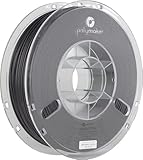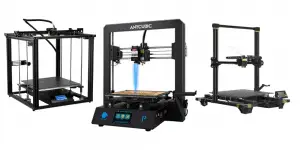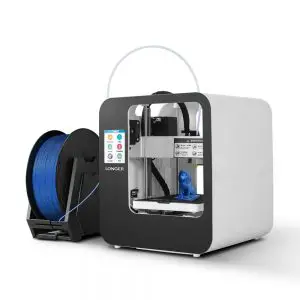Let’s face it, 3D printing is one of the most innovative technologies we have seen in recent years. With it comes the ability to create and build just about anything you can imagine into a physical 3D object. Years ago when I first got into 3D printing I was really blown away by everything I saw was possible. I began to create all kinds of things including, keychains, necklaces, fidget spinners (yes, even those), figurines and miniatures. After experimenting with different types of filaments for different builds I quickly found out that not all filaments are created equal.
Of course, this took quite a bit of trial and error. I admit that there were often some frustrations associated with figuring out what types of plastics to use for what types of projects etc. Even more so, I was often frustrated with some of the brands available on the market. I also quickly learned that some brands you should avoid like the plague, while others are a clear choice.
Today, we are going to discuss one of my favorite filaments, Hatchbox PLA. We’ll talk about how it performs, the ideal temperature, pros, cons and the difference between Hatchbox and everyone else.
Ideal Temperature For Hatchbox PLA
Hatchbox uses PLA or Polylactic Acid to create a fantastic versatile filament. Hatchbox PLA is made from sugarcane, cornstarch, and other biodegradable materials. For this reason, it degrades faster than synthetic polymers and doesn’t stand up to heat well. If you are making something that calls for precision and long life, like parts for a model of a jet engine, Hatchbox PLA is probably not your best bet.
One of the biggest challenges that people often run into when using PLA is determining the proper temperature when printing 3D objects with Hatchbox or similar brands. Having a good handle on the right temperature can make all the difference in the finished product. Based on the Hatchbox safety data sheet the melting point is 155 degrees Celcius. Based on our experience 180C to 210C is more of the sweet spot for this particular brand of PLA. Other things to factor into this include the complexity of the 3D object, type of 3D printer used, heated bed temperature, etc.
What Is PLA Used For?
All PLA is biodegradable, making it a great option for a project that doesn’t need to “stand the test of time” so to speak. Essentially it’s a great material for objects that will be used for short term use. It is recyclable, and will also break down in landfill. The packaged food industry, for example, has largely switched from Styrofoam to PLA packing materials. Styrofoam is notorious for never breaking down and the manufacturing process has a negative environmental impact too.
Since the Hatchbox PLA temperature resistance is low is fine for packing and shipping processes. It typically won’t get hot enough to warp or misshape on the way to the customer. If it does, it doesn’t matter as long as the PLA can cushion the product and keep it from shaking around during shipping. All PLA, being derived from vegetable fibers, is appropriate for food contact which is another appealing advantage.
PLA Benefits
Hatchbox PLA contracts and loses size far less than ABS during the cooling process. In general, a product made from PLA will have a more pleasant overall odor than an ABS creation. This is subjective, of course, but still noticeable and an important distinction for a lot of users and customers.
Since Hatchbox PLA is a pretty versatile filament it’s suitable for use in many projects. Often times we are able to create some pretty cool seasonal decorations for the holidays. A 3D printed skeleton or a fun Christmas ornament are a couple of quick easy options. With the right settings and the right Hatchbox PLA filament temperature, color fastness is excellent.
Hatchbox PLA vs Other PLA Filaments
Hatchbox PLA is a great option for many kinds of users primarily because it offers a strong, reliable PLA plastic that doesn’t break the piggy bank. Not to mention they offer a much wider range of colors than other brands on the market. This is especially important for designers and hardcore hobbyists when the color of a project can make or break the final outcome.
Below you’ll find a list of some other great PLA filaments out there. While we think Hatchbox PLA is one of the best on the market feel free to give a couple of other brands a shot if you want to do a test run for yourself.




- Polymaker PLA – If you’re looking for a super strong and durable PLA filament Polymaker has it. They produce a PLA that is 9 times stronger than regular PLA and it doesn’t clog or produce any stringing. The color selection is a little more limited than some other brands but the quality is worth it.
- MakerBot PLA – One of the best high end filaments on the market. This filament is fantastic and produces high-quality prints. With the high-end quality also comes a higher cost. However, you can be confident that you’ll encounter far less warping than with other brands.
- Colorfabb PLA – A very high-quality premium PLA filament produced by the Dutch brand Colorfabb. They produce filament that is strong, durable and rarely clogs or jams. All of these premium perks don’t come cheap, however. Depending on the project you’re working on this could be a good option if it’s worth the expense.
The Wrap Up
Ensuring that you’re using your Hatchbox PLA filament at the right temperature is important. You don’t want a stringy, flawed or sad-looking finished build. Honing in on the best temperature for both the extruder nozzle and build plate is the key to ensuring that you’ll have great prints every time. We’ve found the sweet spot to be 180 to 210 degrees Celsius, as a rule of thumb. If you start there and tinker around a bit you’ll certainly find what works best for you and your 3D printer, no matter the model.
Now with the temperature woes out of the way, you can focus on making your best high-quality prints. If you’re looking for a reliable PLA filament that is durable, isn’t prone to warping and will produce reliable prints consistently without clogging, Hatchbox PLA may be your best choice
Last update on 2024-05-04 / Affiliate links / Images from Amazon Product Advertising API







